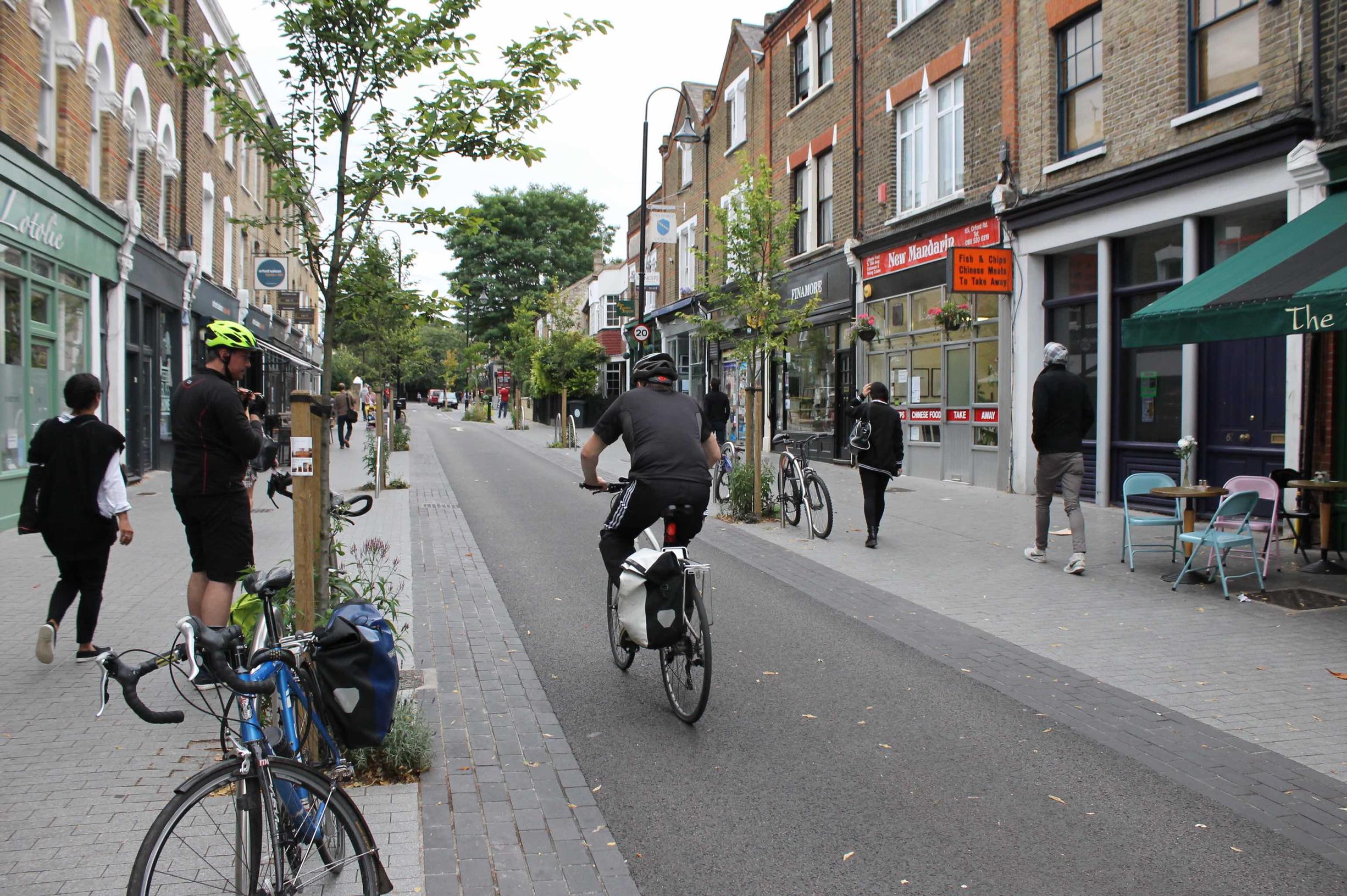

Councils should develop and maintain routes that give priority to pedestrians, cyclists and those using public transport over motorised vehicles, NICE [the National Institute for Health and Care Excellence] has stated in a draft quality standard published today.
The body calls on planners to develop policies and initiatives to ensure “safe, convenient, inclusive access” for pedestrians, cyclists, and public transport passengers with priority over motorised vehicles such as cars, motorbikes and mopeds.
NICE believes that authorities can encourage people to be more active in their day-to-day lives by providing safe, convenient, active travel that is accessible for everyone, including older people and those with limited mobility.
Councils should also aim to provide tactile paving and even surfaces for those with limited mobility, and non-reflective, anti-glare paving surfaces for people with visual impairments.
Other statements in the draft quality standard include:
• Councils and healthcare commissioners should employ a physical activity champion to oversee local strategies, policies and plans.
• Councils to work with community and voluntary groups to design and manage public open spaces.
• Physical activity programmes in workplaces to encourage employees to move more and be more physically active.
• Schools to monitor and update their travel plans annually to increase active travel.
• Physical inactivity is responsible for one in six UK deaths (equal to smoking) and is estimated to cost the UK £7.4bn annually (including £0.9bn to the NHS alone, said NICE.
NICE has launched a consultation on the statements, which runs until 1 February, for commissioners, service providers, health and public health practitioners and the public.
Professor Gillian Leng, deputy chief executive and director of health and social care at NICE, said: “As a society we are facing a looming Type 2 diabetes crisis, which is in part caused by people not exercising enough. We need more people to change their lifestyle and to take more exercise.
“People can feel less safe when they walk or cycle compared with when they drive. We’ve got to change this.
“So asking planners to prioritise pedestrians, cyclists and those who use public transport when roads are built or upgraded can ensure they are safe, attractive and designed to encourage people to get out from behind their wheel.”
Joe Irvin, chief executive of Living Streets, the charity for everyday walking, said: “For decades our towns and cities have been built to prioritise motor vehicles; resulting in unhealthy air, congested roads and a decline in people walking everyday journeys.
“The better planning that NICE is suggesting is absolutely necessary. Those who are the most vulnerable – children and older people - are currently suffering the most from bad air, unhealthy lifestyles and social isolation.
“Placing key services like schools, GP surgeries and bus stops within walking distance is vital. More people getting out and walking everyday journeys, such as to work or school, will make us a healthier country.”
Xavier Brice, chief executive of walking and cycling charity Sustrans, welcomed the NICE draft quality standard. “For too long roads in our towns and cities have been dominated by cars and a shift to people-prioritised streets will not only encourage more of the public to travel actively, but also help to create safer environments for everyone to move around in.
“Involving local authorities and residents in the redesign of their neighbourhoods and streets is essential as it ensures a good design that targets the issues people experience locally every day, and we have seen positive uptake in active travel through this approach. However, more needs to be done across the UK to enable more people to choose walking and cycling as their primary mode of transport for local journeys.
“Cycling and walking for more journeys is part of the solution to many of the challenges we face, including road congestion, air pollution and high levels of inactivity. This proposal demonstrates how – with some practical design solutions – we can address these challenges, while also protecting people who cycle and walk.”
TransportXtra is part of Landor LINKS
© 2026 TransportXtra | Landor LINKS Ltd | All Rights Reserved
Subscriptions, Magazines & Online Access Enquires
[Frequently Asked Questions]
Email: subs.ltt@landor.co.uk | Tel: +44 (0) 20 7091 7959
Shop & Accounts Enquires
Email: accounts@landor.co.uk | Tel: +44 (0) 20 7091 7855
Advertising Sales & Recruitment Enquires
Email: daniel@landor.co.uk | Tel: +44 (0) 20 7091 7861
Events & Conference Enquires
Email: conferences@landor.co.uk | Tel: +44 (0) 20 7091 7865
Press Releases & Editorial Enquires
Email: info@transportxtra.com | Tel: +44 (0) 20 7091 7875
Privacy Policy | Terms and Conditions | Advertise
Web design london by Brainiac Media 2020